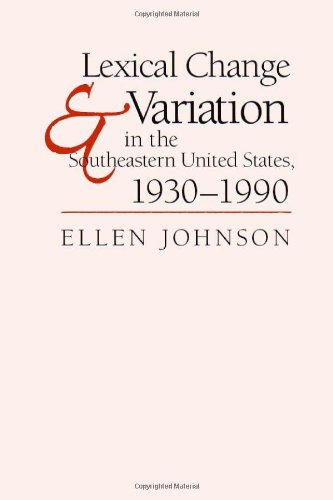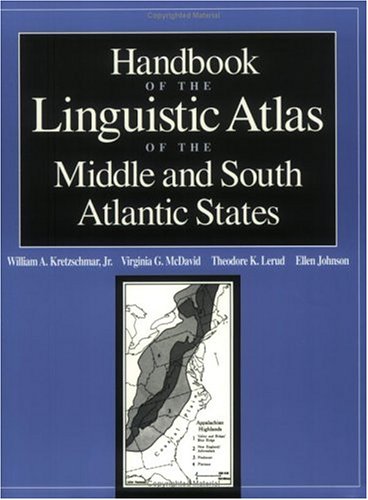Background
Johnson, Ellen was born on September 17, 1959 in Atlanta. Daughter of Charles Edward and Rebecca (Paschal) Johnson.



( This book discusses words used in the Southeast and how...)
This book discusses words used in the Southeast and how they have changed during the 20th century. It also describes how the lexicon varies according to the speaker's age, race, education, sex, and place of residence (urban versus rural; coastal versus piedmont versus mountain). Data collected in the 1930s as part of the Linguistic Atlas of the Middle and South Atlantic States project were compared with data collected in 1990 from similar speakers in the same communities. The results show that region was the most important factor in differentiating dialects in the 1930s but that it is the least important element in the 1990s, with age, education, race, and age all showing about the same influence on the use of vocabulary. An appendix contains a tally of the responses given by 78 speakers to 150 questions about vocabulary items, along with speakers' commentary. Results from the 1930s may be compared to those from 1990, making this a treasure trove for anyone interested in regional terms or in how our speech is changing as the South moves from an agricultural economy through industrialization and into the information age.
http://www.amazon.com/gp/product/081730794X/?tag=2022091-20

( Who uses "skeeter hawk," "snake doctor," and "dragonfly...)
Who uses "skeeter hawk," "snake doctor," and "dragonfly" to refer to the same insect? Who says "gum band" instead of "rubber band"? The answers can be found in the Linguistic Atlas of the Middle and South Atlantic States (LAMSAS), the largest single survey of regional and social differences in spoken American English. It covers the region from New York state to northern Florida and from the coastline to the borders of Ohio and Kentucky. Through interviews with nearly twelve hundred people conducted during the 1930s and 1940s, the LAMSAS mapped regional variations in vocabulary, grammar, and pronunciation at a time when population movements were more limited than they are today, thus providing a unique look at the correspondence of language and settlement patterns. This handbook is an essential guide to the LAMSAS project, laying out its history and describing its scope and methodology. In addition, the handbook reveals biographical information about the informants and social histories of the communities in which they lived, including primary settlement areas of the original colonies. Dialectologists will rely on it for understanding the LAMSAS, and historians will find it valuable for its original historical research. Since much of the LAMSAS questionnaire concerns rural terms, the data collected from the interviews can pinpoint such language differences as those between areas of plantation and small-farm agriculture. For example, LAMSAS reveals that two waves of settlement through the Appalachians created two distinct speech types. Settlers coming into Georgia and other parts of the Upper South through the Shenandoah Valley and on to the western side of the mountain range had a Pennsylvania-influenced dialect, and were typically small farmers. Those who settled the Deep South in the rich lowlands and plateaus tended to be plantation farmers from Virginia and the Carolinas who retained the vocabulary and speech patterns of coastal areas. With these revealing findings, the LAMSAS represents a benchmark study of the English language, and this handbook is an indispensable guide to its riches.
http://www.amazon.com/gp/product/0226452832/?tag=2022091-20
Johnson, Ellen was born on September 17, 1959 in Atlanta. Daughter of Charles Edward and Rebecca (Paschal) Johnson.
Bachelor in Foreign Languages, Rhodes College, 1980. Doctor of Philosophy in Linguistics, University Georgia, 1992.
Research coordinator, Linguistic Atlas Project, Athens, Georgia, 1987-1994; Adjunct Professor, Piedmont College, Demorest, Georgia, 1994-1995; instructor, Georgia State University, Atlanta, 1995; assistant professor, U. Memphis, 1995-1996; assistant professor, Western Kentucky U., Bowling Green, since 1996.
( Who uses "skeeter hawk," "snake doctor," and "dragonfly...)
( This book discusses words used in the Southeast and how...)
Member American Dialect Society, Southea. Conference on Linguistics.
1 child, Thomas Johnson Frasure.
